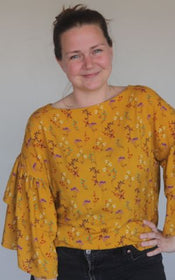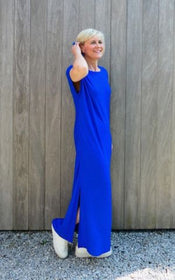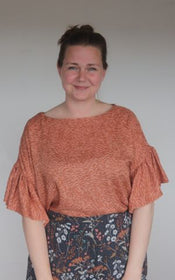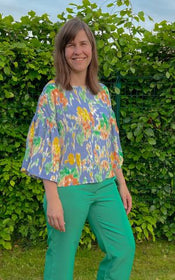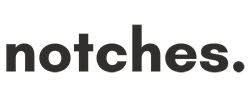Notified by email when this product becomes available
SIZE CHART
FIND YOUR SIZE
Take your measurements and compare them to our size chart to see which size to print.
How to pick the right size for your sewing project?
1. Measure yourself or the body of the person you are going to sew for and write down the measurements.
2. For shirts, tops and dresses look at the bust circumference, for bottoms look at the hip circumference. Which size does your measurements fit the most? That's the size you need to print out. If you're sewing a fitted design, consider adjusting the waist circumference to your measured size on the pattern.
3. If you fall in between sizes, choose the larger size and adjust the pattern if desired. We recommend making a trial version first, so you can evaluate how many adjustments the garment needs.
WOMEN

How to determine your cup size:
1. Measure your upper bust circumference passing your back under your armpits above your bust at the narrowest possible part. Compare to the measurements in the table to see which size you should take. Take this size to print or trace.
2. Measure your full bust circumference across the widest part of your bust. Go down the column of the size you determined in step 1 until you find a measurement close to your full bust measurement.
TIP!
Measure yourself in a comfortable, well-fitting bra (without padding, unless that's what you always wear) for the most accurate measurements. When in doubt, take the larger size.


MEN

KIDS

Have a question?
Billy is a versatile sewing pattern with which you can make the perfect T-shirt dress, a basic top or a piece with statement sleeves. It has a very straight forward design and a lot of different options.
What your Billy will look like in the end is all up to you. You choose the design depending on which part of your personality you want to express with your homemade clothes.
Here are some of Billy’s main features:
- She has a fairly wide, straight cut and can handle a lot of different body types, even though she doesn’t have a bust dart.
- You can make Billy either in a woven fabric or a knit fabric. Choose your neckline option accordingly with either a jersey trim or a facing.
- No closure, the neckline is wide enough.
- The dress has slits on the sides and you can either put pockets on there or choose not to.
- There are also different length options: top, short dress and long dress. And a bunch of sleeve options to choose from. You can see all 40 variations in the tab below.
All pattern pieces and instructions for the variations are included in the digital pattern file. With this sewing pattern, you can make up to 40 unique garments!
Fabric choice
Both the top and dress are super comfy when you make them in a knit fabric. In that case you make the neckline with jersey trim. But because of the wide fit, woven fabrics are also very suitable. Choose well-flowing fabrics such as medium-weight viscose or polyester blends, tencel, bamboo, modal or cupro. For thick stiff fabrics this model is less suitable, there should be a certain fluidity in the fabric.
WE STRONGLY RECOMMEND WASHING YOUR FABRIC BEFORE CUTTING.
Think about the environment and choose deadstock fabrics if you can. That way you give these leftover fabrics from fashion brands a second life and they don’t end up in landfills. We source our quality deadstock designer fabrics at The Fabric Sales.
Variations
This pattern gives you the opportunity to make not 1, but several garments. Here is an overview of all the variants you can make with this set of pattern parts.
Top with jersey neckband

Top with neck facing

Long dress with jersey neckband

Long dress with neck facing

Long dress with jersey neckband and pockets

Long dress with neck facing and pockets

Short dress with jersey neckband

Short dress with neck facing

Level
Easy to intermediate (depending on the variation).
Billy is a perfect beginner’s project or a quick-fix project for more experienced sewists, as there is no closure and not too many other techniques involved. The easiest variation is the sleeveless version with neck facing. A more challenging project is the dress with the double ruffled sleeve and slits in the side seam, but even that one is quickly put together.
Fit
Billy has a wide, straight cut that suits most body types. There are no bust darts. The length of the top falls down to high hip length. The dress version comes in two lengths: right above the knee and halfway down the lower leg. The long version has two slits in the side seam for plenty of room to move. The armhole is wide, but gives enough concealment when you choose the sleeveless version.
PDF files
Please note that when you buy this product you are purchasing a set of digital files. Nothing will be physically sent to your doorstep. If you are new to PDF sewing patterns, check out this guide.
After your purchase has been completed, you will find a download link on the confirmation page. You will also receive a download link via the email you used at checkout. And your files will be immediately available in your online account if you have registered. By clicking any of the download buttons you can save the files to your computer for future use. Be sure to do so before printing them.
Save on paper and ink with our printer-friendly files. All the files listed below are included with your purchase.
- Extensive illustrated step-by-step tutorial.
This instruction booklet is an interactive PDF made easy for screen with large lettering, clickable navigation and links to video tutorials if available. If you do rather print the tutorial, there’s a ‘save ink’ layer available. - Cheat sheet.
You can print this one page containing some key information and your notes to store with your paper pattern parts. - A4/letter pattern to print at home.
This file contains all the pattern parts you need to make every single variant. When you print this, you will need to tape or glue the pages together before you can cut out the entire pattern pieces. Learn here how you can tape the pieces together in a fast and easy way. - A0 pattern to print at a copy shop.
Would you rather not tape pieces together? We got you covered with this large pattern format. If you don't own a plotter you can print out this file in a copy shop or at a fabric store that provides a print on demand service. - Both A4/letter and A0 pattern files come in a file where the seam allowance is included AND a seperate file where the seam allowance is not included (which is easier to work with if you want to do a lot of adjustments). All files have a layer per size so that you don’t have to trace your size onto a different sheet of paper and add seam allowance yourself. You can easily uncheck all the layers you don’t need and print only your size with seam allowance included. That way you can directly cut out what you have printed. Don’t forget to tell your copy shop to select the right layers!
- Projector file. Want to skip printing all together? You can! With this file you can project the pattern pieces straight onto your fabric using a projector/beamer.
(The images below are for layout example purposes only and are from a different sewing pattern)
Example of A4/US Letter PDF with selected layers

Example of A0, seam allowance included, no layers selected
Example of the optimized projector file with selected layers

Example page from the e-book with sewing instructions

Notions

Fabric requirements
The fabric lengths charts show how much fabric you will need for all variations, calculated on a standard fabric width of 140 cm - 1.55 yd. If your fabric is narrower, you will need more fabric length. For broader or narrower fabrics you can calculate how much fabric you will need by laying out the pattern pieces on the table according to your fabric width and measuring how much fabric length you will need accordingly.


Finished measurements










































